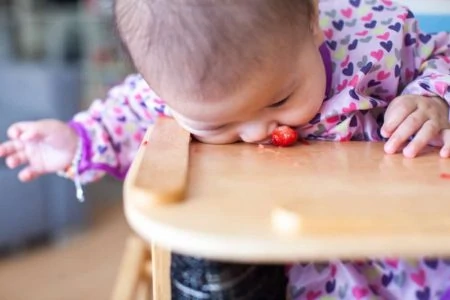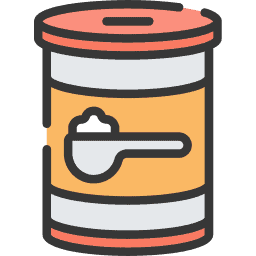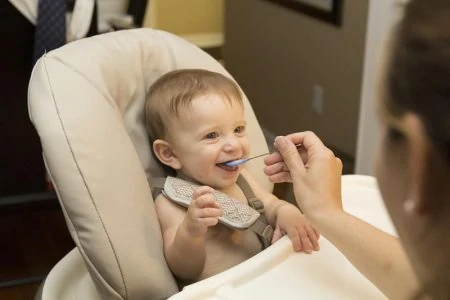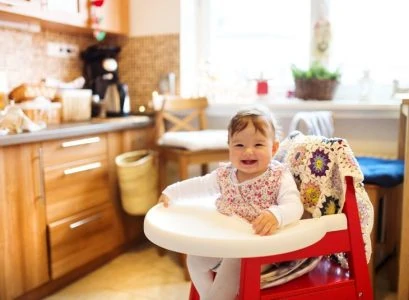Any parent of a self-feeding toddler knows the struggle. You lift them out of the seat, and somehow, there is more pasta sauce under their bum than in their tummy. If you don’t stay on top of it, that high chair turns into a crusty, sticky monument to mealtime chaos.
I have a friend who let it go so long she actually took the high chair to a car wash to pressure wash it. While that is creative, you don’t need industrial equipment to get the job done. A simple daily routine and a monthly deep clean are all it takes to keep things sanitary.
We have scrubbed more dried oatmeal than we care to admit to bring you this guide. Here is how to keep that high chair spotless and safe for your little one.
Key Takeaways
- Germs hide in plain sight: Dirty high chairs often harbor dangerous bacteria, sometimes testing higher for germs than public toilet seats.
- Consistency is key: Daily wipe-downs prevent build-up, while weekly sanitation tackles the mess you can’t see.
- Deep clean monthly: You need to disassemble straps, remove cushions, and dig into crevices once a month to prevent mold and grime.
- Check your materials: Always verify manufacturer instructions before using bleach or machine washing straps to avoid damaging safety gear.
Why Deep Cleaning Matters
Watching your baby learn to eat is equal parts adorable and terrifying. It is fun to watch them develop independence, but the cleanup is no joke.
If you aren’t removing smashed food regularly, you might be exposing your child to harmful bacteria. A study of restaurant high chairs found they harbored more germs than the average public toilet seat (1). Since your baby eats directly off the tray (and sometimes the armrest), hygiene is non-negotiable.
Take Note
Beyond old food, accidents happen. Diaper blowouts and vomit are common in the high chair. When that occurs, a wet paper towel won’t cut it. You need to ensure you kill the lurking bacteria completely.
Cleaning Different Materials
High chairs come in all shapes, from hook-on models to space-saving boosters. Materials vary from cheap plastic to treated wood or metal.
Before you start scrubbing, assess the construction. Most modern chairs are plastic with metal release mechanisms, but antique chairs might be solid wood.
Follow these material-specific rules:
- Wood: Avoid soaking or using harsh bleach, as it can strip the finish and warp the wood.
- Fabric Cushions: Check laundry labels; some can be machine washed, while others are wipe-only.
- Metal Parts: Dry immediately after cleaning to prevent rust in the springs or screws.
How Often Should You Clean It?
You don’t need to spend hours scrubbing every day. The trick is maintenance. Doing a little bit after every meal prevents the “cement effect” of dried baby food.
Daily cleaning tasks include:
- Brush off crumbs: Get the loose stuff off the seat.
- Wipe down: Clean visible food from the seat and footrest.
- Sanitize the tray: This is the most critical surface.
Weekly cleaning tasks include:
- Check underneath: Remove the seat to wipe the chair or floor below.
- Full wipe down: Clean the legs and exterior with a safe solution.
Monthly (deep clean) cleaning tasks include:
- Disassemble: Take apart what you can safely remove.
- Wash fabrics: Launder cushions and scrub straps.
- Crevice detail: Dig out the gunk from seams and buckles.
How To Clean High Chairs: 8 Steps
1. Brush Off Loose Crumbs (Every Use)
Before you wet anything, get rid of the dry stuff. If you add water to breadcrumbs or cracker dust, you just make paste. Brush crumbs onto the floor to be swept up, or catch them in a napkin. This prevents debris from getting ground into the safety belt mechanisms.
2. Wipe With a Damp Cloth (Every Use)
Once the big chunks are gone, wipe the chair with a damp cloth or sponge. Do this immediately after the meal. If you wait an hour, that sweet potato puree will turn into cement.
Target these sticky spots:
- The Seat: Where the diaper touches.
- Cushion Crevices: Food loves to hide here.
- Tray Underside: Babies love touching this with messy hands.
- Release Buttons: These get sticky fast.
3. Disinfect The Eating Surface (Every Use)
The tray needs to be sanitized, not just wiped. You can pop many modern trays in the dishwasher (check your manual first!). If washing by hand, choose one effective sanitizer.
Choose one of these methods:
- Vinegar: Spray 50/50 water and white vinegar; let sit for 5 minutes, then wipe.
- Hydrogen Peroxide: Spray, let sit for 5 minutes, then wipe.
- Bleach Solution: Dilute two teaspoons of bleach in one gallon of water; wipe and allow to air dry.
- Disinfectant Wipes: Use a store-bought wipe safe for food surfaces.
Caution
4. Wipe The Seat Below (Weekly)
If you use a space-saver model strapped to a dining chair, unbuckle it once a week. You will be shocked at the amount of crumbs that migrate through the base and onto the dining chair underneath.
5. Clean The Frame and Legs (Weekly)
Food splatters everywhere. Once a week, wipe down the legs, the step stool, and the exterior plastic shells. If you find dried-on splatter, the scrubby side of a sponge or a Magic Eraser works wonders on white plastic legs.
6. Wash Cushions and Straps (Monthly)
This is the big job. Take the padding and straps off. Most fabric covers are machine washable, but always air dry them to prevent shrinking.
For the straps, if they cannot be machine washed, soak them in a bowl of hot water and dish soap for 20 minutes. Scrub them with a brush to remove the grime, rinse thoroughly, and hang to dry in the sun. Sunlight helps kill remaining bacteria and remove stains.
7. Detail The Crevices (Monthly)
This is where the “yuck” factor is highest. Use a toothpick, a toothbrush, or even compressed air to blast gunk out of tight spaces.
Focus on these hidden traps:
- Strap slots: Where the belt enters the plastic seat.
- Buckles: Inside the female end of the clip.
- Moving parts: Tray sliding tracks and height adjustment levers.
- Seams: Where two pieces of plastic join.
8. Eliminate Stuck-On Food (As Needed)
If you missed a spot and it has hardened, don’t chip at it (you might scratch the plastic).
Try these softening techniques:
- Vinegar Soak: Lay a paper towel soaked in vinegar over the spot for 10 minutes. It softens the food for easy wiping.
- Hot Soap Bath: If the part is removable, soak it in hot soapy water in the bathtub.
- The Hose: For really bad messes, take the whole chair outside and spray it down (weather permitting).
FAQs
Easy Peasy!
Cleaning the high chair doesn’t have to be a nightmare. By wiping down the tray after every meal and doing a quick deep clean once a month, you keep the bacteria at bay. A clean chair means a healthier baby and a much happier parent at mealtime!













